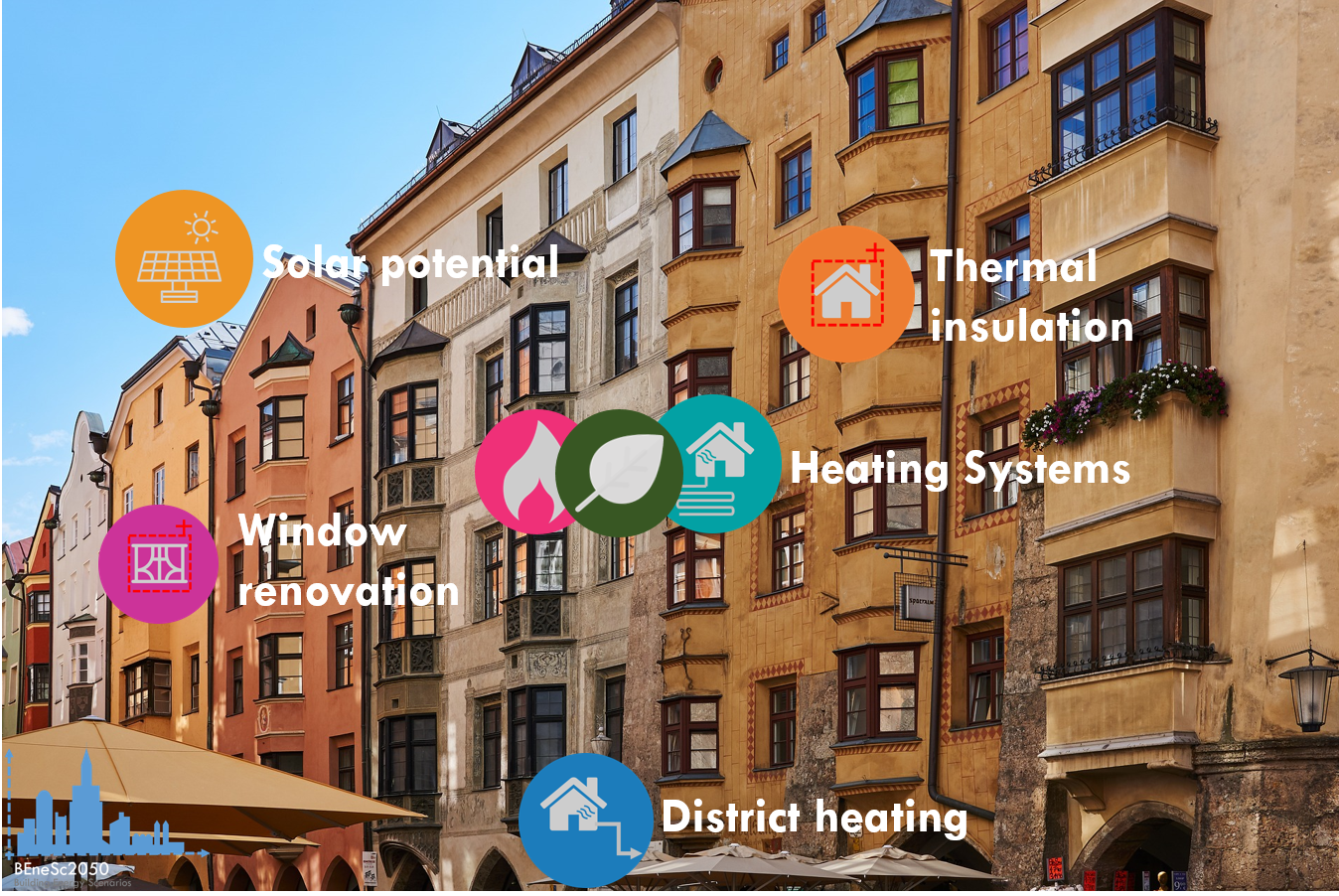Modules

Module 1 – Heating system
The essential model for the scenario calculation is a decision model, which calculates the probabilities of the investor for the respective space heating technology. The energy carrier is determined based on various price scenarios and political guidelines and targets.
Module 2 – Thermal insulation
The decision model for the thermal insulation specifies the type of installation and the optimal insulation thickness of the facade of the building. The model allows a simulation with different public funding opportunities, and also differentiates between standard insulation and insulation using renewable raw materials.
Module 3 – Population growth and new buildings
With this model the new construction of residential buildings is simulated. For this purpose, the population forecasts prepared by ÖROK, an institution of regional planning at state level, is used.
Module 4 – Domestic Water
The modeling of hot water is mainly tied to the decision of space heating decision model and the information available in the baseline data.
Module 5 – Solar potential
In the solar potential model, each building is assigned to the existing solar potential from the roof area with the already stored efficiencies of the various systems. The data for the solar potential is taken from the project “Solar Tirol” (www.tirolsolar.at) and has been assigned to the individual residential buildings and integrated into the database. As a result, due consideration can be made on the installation of a photovoltaic or solar thermal system, based on the different price developments of the energy carriers under different financial funding scenarios.
Module 6 – District heating
The district heating model, which correlates with the model of the heating system, considers the connecting of the residential building to the district heating network. In this first step, the decision of the owner is queried. If a positive decision is made, the expansion of the network to the respective building is decided by the operator of the district heating network. This results in an annual network extension of the existing district heating network.